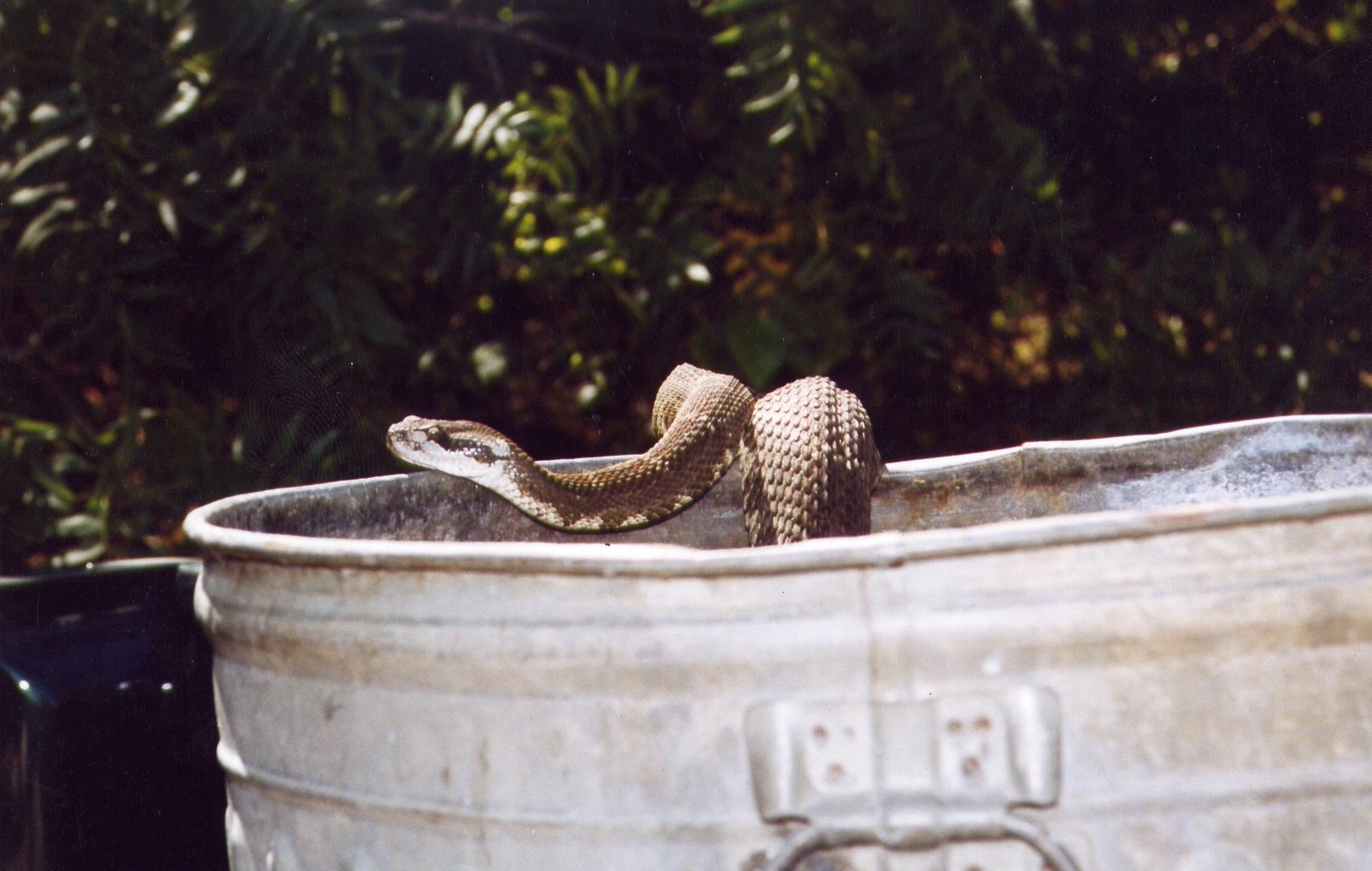
Snake Rescue Gone Bad
One day I received a frantic call from a woman with a rattlesnake on her patio. I always responded to “snake calls,” because I knew that if I didn’t go, the snake would likely be killed. While I was well aware that rattlesnakes weren’t well regarded by the general public, I was in the business of protecting wildlife, and like it or not, rattlesnakes qualify as wildlife. So, I threw a large metal trashcan into the back of my patrol pickup as I left my home. I felt it unlikely that one of our local rattlesnakes would be able to climb out of the trashcan.
Upon reaching the woman’s home, I verified that it was indeed a rattler, larger than average. I therefore pinned its head down with a stick, carefully grabbed it close behind the head and carried it out to my truck. When I lowered it into the trashcan, I still believed that it would be unable to escape. As you can see, I was quite wrong.
As I was driving through the town of Oroville, I noticed people excitedly pointing at the trashcan. I glanced in my rearview mirror, and was unhappy with what I saw. Because the snake was riding on the rim of the trashcan and appeared to be enjoying the ride, I decided to keep going. The snake rode there as I drove several miles out of town. I released it at an out-of-the-way spot where it would be far less likely to be chopped in two with a shovel.
Speaking of rattlesnakes, I once had to enter and clear a house said to contain over 70 live rattlesnakes and a two-week-old dead body . . . but that’s another story. If you find the chaotic and hazardous lives of game wardens interesting, check out the true warden stories in my WARDEN FORCE book series at Amazon.